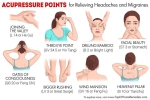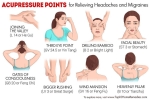Home » Blog
| Stem Cell, PRP, Acupuncture in Queens & Long Island, New York
Blog | Stem Cell, PRP, Acupuncture in Queens & Long Island, New York
Herniated discs can cause a variety of different symptoms, but those symptoms can vary depending on where the disc herniation occurs in your spine. Below, we take a closer look at the symptoms of herniated discs based on where they develop in your back. For those of you unfamiliar with the sections of your spine, it can be broken down into three segments: The cervical, thoracic and lumbar portions of your spine.
Cervical. The cervical portion of your spine involves the first seven vertebrae at the top of your spine near your neck.
Thoracic. Below the cervical spine is the thoracic portion of your spine, which is home to the next 12 vertebrae.
Lumbar. Underneath the thoracic spine sits the lumbar portion of your spine, which involves the next five vertebrae.
Read more
According to the American Headache Society, approximately 28 million Americans over the age of 12 experience migraines. A migraine is more than just a bad headache. Throbbing pain in your head is a common symptom, but it’s not only one that people experience. Migraines can also involve nausea, vomiting, diarrhea, sensitivity to light and sensitivity to sound. In some cases, you may even experience migraines with some of these symptoms but no head pain. Migraines can be a debilitating, chronic health condition. In some cases, stimulating pressure points on your body may help provide relief. If you press on the point, it’s called acupressure. If you use a thin needle to stimulate the point, it’s called acupuncture.
Read more
There are many reasons to be believed for getting RA symptoms worse but here are some of the important ones:
You're Having a Flare - Red, warm, swollen joints are inflamed. A flare is when inflammation in your body spikes. Your symptoms can get worse. You might also have a mild fever, fatigue, and feel sick all over. To treat a flare, your doctor might adjust your medicine to lower the inflammation. To feel better, get more rest and apply hot or cold packs to sore, swollen joints.
Read more
Nobody wants to go undergo an operation, especially if that surgery involves an intricate structure, like your spine. Although some conditions are best treated with a surgical operation, the vast majority will respond to preventative measures and conservative care. So if you want to avoid an operation on your spine, consider these five tips.
Avoiding Spine Surgery - Always listen to your physician’s specific advice when it comes to your exact condition, but these five tips can help keep back pain at bay and keep you off the operating table.
Read more
Experiencing the pain and discomfort of a headache is incredibly common. If you’re looking for a more natural way to treat your headache, you may want to think about acupressure and pressure points. Pressure points are parts of the body believed to be extra sensitive, able to stimulate relief in the body. Practitioners of reflexology, a discipline of Chinese medicine, believe that touching pressure points in a certain way can: Improve your health, Ease pain and Restore balance in the body.
Read more
Rub on Capsaicin - This is the stuff that gives chili peppers their heat. When you put it on your skin, it blocks pain signals. Capsaicin comes in creams, gels, and patches. One study found that people who used capsaicin cream daily for a month (along with other arthritis medications) had their arthritis pain eased by 57%. Before trying it, dab a little on first to make sure you’re not allergic.
Read more
If you have an issue with one or more of your spinal discs, you’ve likely heard the term “slipped disc.” This term is sometimes used interchangeably with a bulging disc and herniated disc, but there is no consensus in regards to its precise definition. To help clear things up, let’s look at how the term “slipped disc” may be used when it comes to problems with your spinal discs.
Read more
What Causes Shoulder Pain? - We tend to associate shoulder pain with sports such as tennis and baseball, or with the aftermath of moving around our living room furniture. Few would ever suspect that the cause is often something as typical and inactive as sitting at our desks. However, it turns out that staring at our computer screens for more than eight hours a day can have an enormous effect on our shoulders’ deltoid, subclavius, and trapezius muscles.
Read more
You’re Getting Older - As you age, your cartilage -- the spongy material that protects the ends of your bones -- begins to dry out and stiffen. Your body also makes less synovial fluid, the stuff that acts like oil to keep your joints moving smoothly. The result: Your joints may not move as freely as they used to. It sounds a little crazy, but the best thing you can do is keep on trucking. Synovial fluid requires movement to keep your joints loose.
Read more
With so many advancements in the treatment of lower back pain, heat therapy is often overlooked. But heat therapy can provide meaningful relief in a short amount of time—and best of all it is easy to do. Here is how to use heat therapy to help you find relief from your lower back pain: How Much Heat Do I Need? - Before we talk about how to apply heat therapy to your lower back, let’s quickly look at the best temperature for heat therapy. Ideally, any type of heat therapy should be at a warm temperature—as too high of a heat can burn your skin. In contrast, a warm temperature will allow the heat to penetrate down into your lower back muscles without damaging your skin.
Read more
Love this Post? Spread the World






















